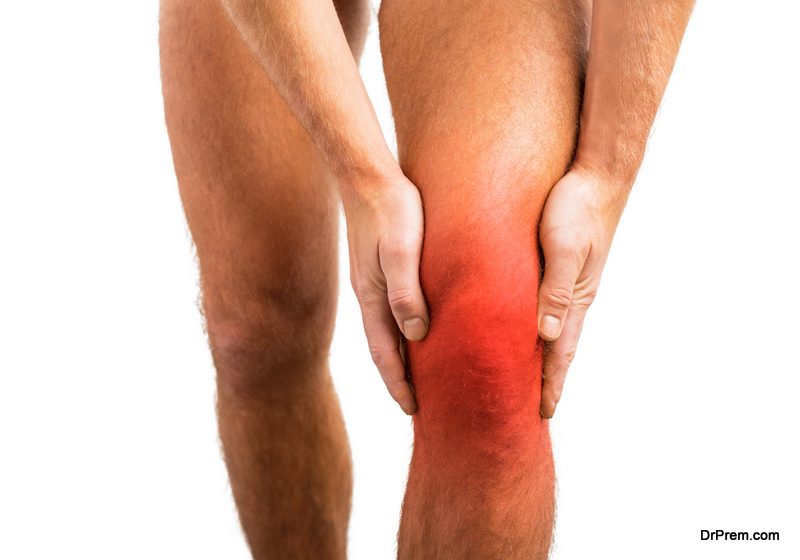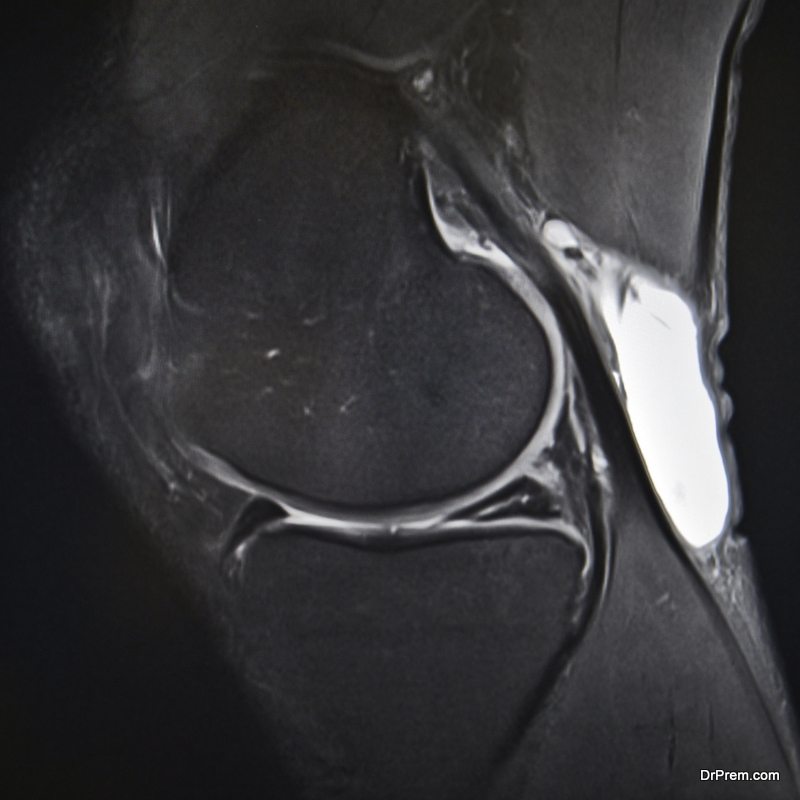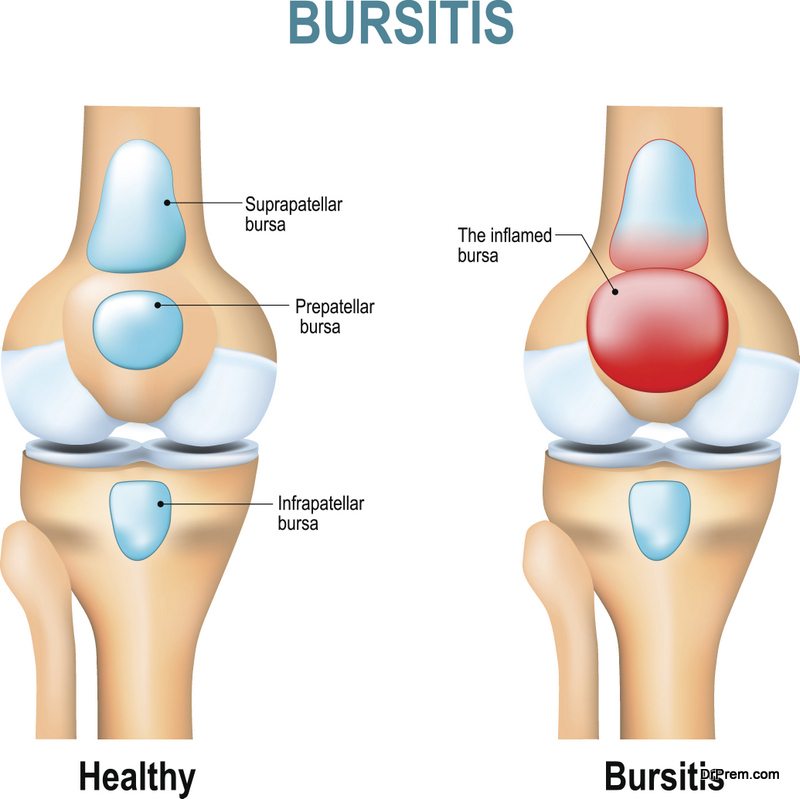Whether you’re active through regular exercise or sports, accidents happen. Your knees are susceptible to injury for a variety of reasons. The knee joint is a complex thing. It hinges. Allowing you to sit, squat, jump, and run. It’s made up of many moving parts, tendons, and ligaments. Because of the knee’s make-up, you can injure any one of these components in a variety of ways including twisting in an awkward position, moving too quickly, abruptly changing direction, or exposure to constant pounding and pressure. Here we’ll cover some of the most common knee injuries, how they occur, how to treat them, and how to prevent them in the future.
ACL Injuries

You’ve probably heard of athletes tearing their ACL. The ACL, or anterior cruciate ligament, is located diagonally in the front of the knee. The ACL is essential in helping the knee joint remain stable. ACL injuries are fairly common and may require surgery, depending on their severity.
Though athletes aren’t the only ones who suffer from this type of knee injury, they are the most common due to the movements athletes use and the physical nature of sports. In fact, there is a study proves that knee injuries is athletes is on the rise. Putting excess stress on the knee joint can cause injury, along with these movements:
- A direct blow or collision
- Suddenly changing direction
- Suddenly slowing down
- Stopping suddenly
- Pivoting on a stationary foot
- Landing awkwardly following a jump
ACL injuries are graded from a scale of one to three, one being the most mild injury, often categorized as a sprain and three being the most severe and often described as a tear. There are a few ways to determine if you’ve injured your ACL including hearing a loud, popping noise, pain or discomfort, swelling, decreased range of motion or difficulty walking and moving around.
In order to determine the severity of your injury, a medical professional will manually move, bend and examine the area. An X-ray or arthroscopy procedure may be ordered if further diagnosis is needed. Once you’ve determined the severity of your ACL injury, you can discuss treatment options.
These include simple remedies such as ice, elevation, and rest if you’ve experienced a simple ACL strain, to surgery if the injury is more serious. Anti-inflammatory and over the counter pain medications can help with discomfort, as well as wearing a knee brace. Physical therapy may also be in order following the injury. This will ensure your joint returns to its full range of motion.
Meniscal Tear

The knee is made up of four different components. We already discussed ligaments and tendons but the knee also includes bones and cartilage. The cartilage in your knee is also known as the meniscus and has an important job. This rubbery piece of cartilage runs from the thigh bone to the shin bone that stabilizes and protects the knee joint.
Meniscus tears are fairly common and are often caused by sudden stops, starts, and pivots of the knee joint. In some situations, a small piece of the cartilage can actually break loose from the knee, causing the joint to lock up. Older athletes are especially susceptible to meniscus tears because this cartilage wears and weakens with age. It’s decreased strength means it’s more easily torn. In such situations, the doctor will also suggest practical methods of managing acute joint pains and problems.
Many symptoms of a meniscus tear mirror those found in an ACL injury. These two injuries often happen together, as well. Sufferers may hear a or feel a “pop” in their knee, followed by pain, swelling, difficult straightening or bending the knee, and feeling like the knee is “locked” in place. Diagnosis includes an examination by a medical professional, an X-ray or MRI.
Once it’s determined that you’ve experienced a meniscus tear, treatment options are discussed. Treatment depends on a lot of factors including the severity of the tear, the age of the patient, any related injuries, and the patient’s activity level. Some meniscus tears may actually heal on their own over time, due to their positioning in the knee. Deeper injuries will need assistance to heal properly. The good news is, surgery isn’t often considered for this type of knee injury.
Common treatment options are:
- Rest
- Compression
- Ice
- Elevate
- Use pain and anti-inflammatory medications
- Limited activity/Avoid impact
- Stretching
Most people that experience meniscus tears heal quickly and can return to regular levels of activity, though this is based a lot on the individual’s age and level of activity. Those who suffer from more severe tears are at higher risk of developing arthritis in the knee joint later in life.
Bursitis

The knee joint has small fluid-filled sacs surrounding it that help cushion the pressure and reduce friction. These sacs are known as bursae. When they become inflammed, you suffer from what is known as bursitis. The most common area for inflammation is over the kneecap and on the inner side of your knee, directly below the joint.
The most obvious and common symptom of bursitis is discomfort, swelling, warmth in the area, and tenderness. Bursitis can be caused by a sudden blow to the knee joint or over time due to persistent irritation and friction. This is often caused by jobs that require a lot of kneeling on hard surfaces. Sometimes, an infection is present in the bursa. Other complications can occur due to arthritis of the knee.
You can prevent bursitis by avoiding excessive kneeling and squatting, wearing knee pads, and maintaining a healthy weight. Treatment includes a change in your current behavior or routine, pain medication, injections, or physical therapy. Most cases of bursitis will improve on their own over time.
Be Aware
One of the best ways to prevent these common knee injuries is to be conscious of your movements during any type of physical activity including the different ways to avoid sports injuries. This means avoiding sudden movements, excessive jumping and kneeling. Most knee injuries can be prevented but accidents do happen and cannot be avoided.
The moment you feel discomfort, swelling, or pain in the knee joint, try resting, elevating and applying ice. If the discomfort persists, seek medical attention. Your knee injury may require more extensive care than you can provide at home.
Article Submitted By Community Writer




